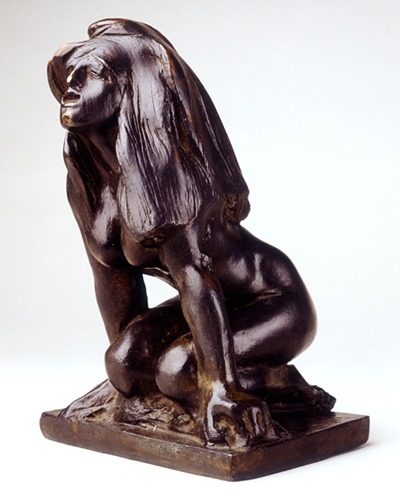The Succubus is a bronze sculpture, a work of French artist Auguste Rodin based on a medieval legend. From the legend, the Succubus is a female demon who appeared in dreams to seduce men.
It was made in 1889 as one of the pieces showing sirens and Nereids. Later, it became part of the monument to Victor Hugo, a state-commissioned monument. The sculpture shows a beautiful kneeling figure of a woman seen to slightly raise her lower back with her body stretched up and forward and the head tilted backwards with eyes closed and mouth wide open. The sculpture is said to show the association between the forces of darkness and cats in medieval beliefs. The Succubus can now be found in Museo Soumaya in Mexico City.
Rodin's Inspiration
Camille Claudel was a French sculptor who worked under Auguste Rodin in his workshop since 1884 and turned out to be his inspiration acting as his assistant, model, lover and confidant until 1898, Though the intimate part of their relationship ended in 1892. Camille is thought to be the model behind many of Rodin's pieces, including the Succubus. As it turns out, Auguste Rodin becomes an inspiration to Claudel; her works carry the same spirit as those of Auguste. The contours on Rodin's sculptures are perfectly done, giving his work an edge over other pieces. Constant Simon was Rodin's mentor in the early days who taught him to focus on a contour line from every angle, which makes them so exceptional.
Rodin Working on his Artwork
Rodin often prefered to work with non-professional models, especially dancers who would move around his studio unobstructed where he would then capture poses that he thought inspired the piece. The dancers were able to twist their bodies to form the complicated poses he, Rodin, would often request. Rodin would then pain the models in watercolors and later model them with clay and cast them in plasters. With the help of skillful assistants, the sculptures would then be resized to be cast in bronze or marble. Rodin's reputation in art was highly boosted by various people, authors, painters and other sculptors.




